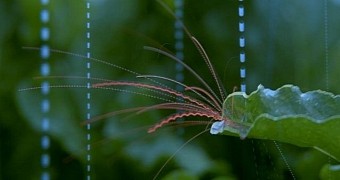Rain might seem like the absolute best thing ever to fall from the sky, especially during the hot summer months, but as it turns out, the fact of the matter is that raindrops have a dark side to them.
According to researchers with the Massachusetts Institute of Technology in the US, it can sometimes happen for raindrops to spread pathogens. In doing so, they can unleash outbreaks serious enough to wipe our entire crops.
As shown in the image accompanying this article, raindrops falling on leaves can act as dispersing agents, meaning that, when bouncing off, they can carry pathogens at a considerable distance from the first site of contamination.
True, the behavior of the raindrops and that of the pathogens they carry depends greatly on the flexibility of the source leaf. Still, the fact remains that rain can foster disease outbreaks among plants.
The Massachusetts Institute of Technology scientists hope that their find will make it easier for farmers to protect their crops by growing plants in such ways that, even if catapulted by raindrops, pathogens won't get to travel all that far.
“We can start thinking of how to smartly reinvent polyculture, where you have alternating species of plants with complimentary mechanical properties at various stages of their growth,” says researcher Lydia Bourouiba.
“By alternating plants in one field, you can mechanically and naturally reduce the range of transmission of a pathogen during rainfall,” the specialist adds.

 14 DAY TRIAL //
14 DAY TRIAL //